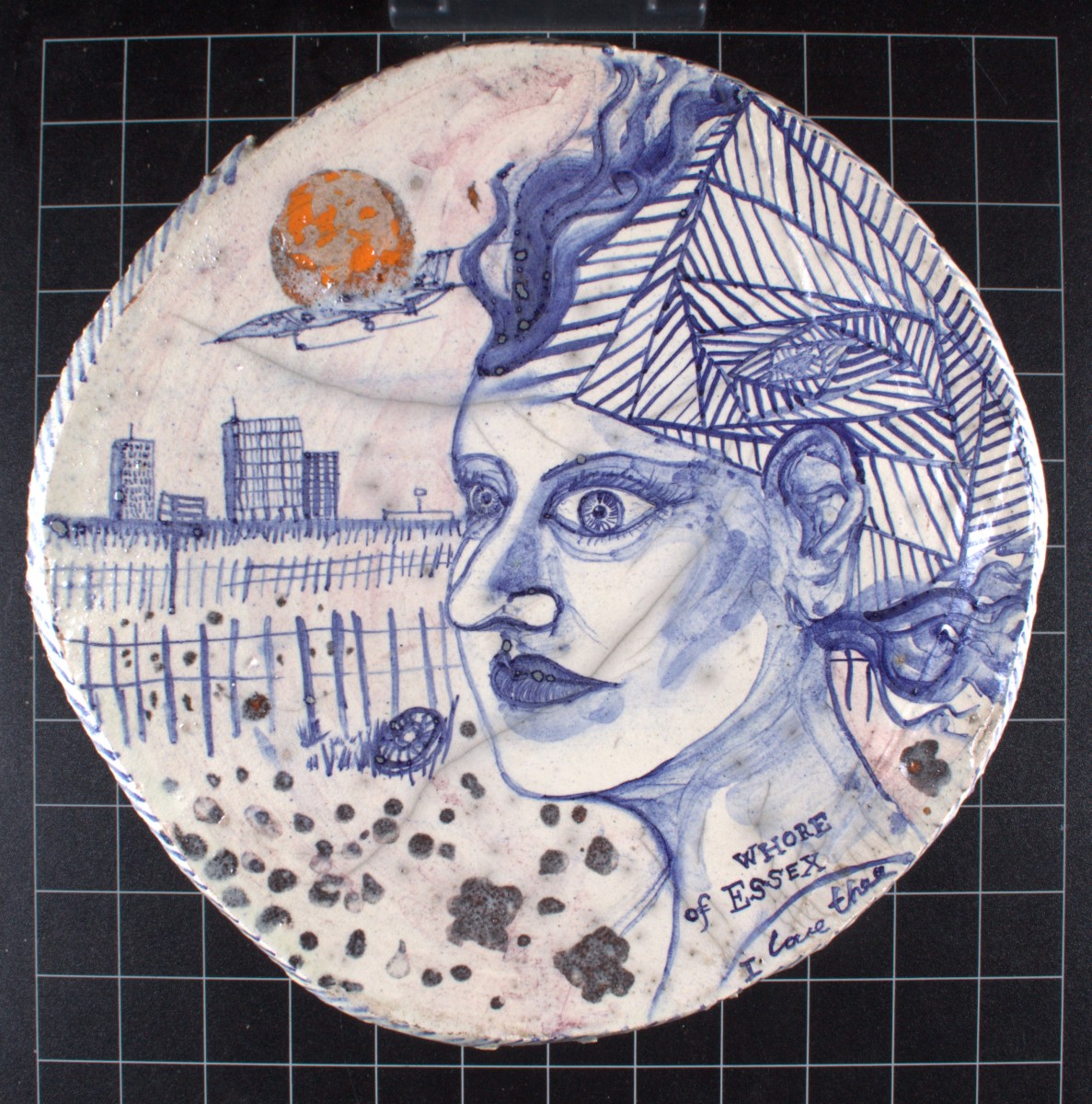Glazed ceramic, 1986
It was a force majeure that brought Grayson Perry (b. 1960) from Chelmsford to Great Bardfield when he was 14 years old and his mother and newly acquired stepfather set up house there. It was not to be a happy period, and at the end of which he returned to live with his birth father. By 1965 the artists who had previously lived in the village and jointly organised the three “open house” days in 1954, 1955 and 1958, had begun to disperse. The young Perry, as newspaper delivery boy for his stepfather, was therefore not directly influenced by them, although subsequently he has spoken of his admiration for their work. In 2011, when “on a pilgrimage to a shrine to my favourite Essex artists” he signed the Fry Gallery visitors book saying it “is a concentrated burst of loveliness, a shrine to the art of my home county.” Perry particularly admires Ravilious’s work.
In 1978 he attended the Braintree College of Further Education, which enabled him the following year to enrol for the BA course in Fine Art at Portsmouth Polytechnic.
After graduating in 1982 Perry became part of the Neo Naturist movement, which found, in Andrew Wilson’s words,” beauty in representations of ugliness, naffness and home -made amateurishness; their work was not entertainment or a rehearsal but instead the realization of life adorned.” * Perry’s interest in ceramics grew in this period and in 1987 he bought his own kiln. In 2003 when awarded the Turner Prize he described himself as the transvestite potter, and his reputation as a popular artist has continued ever since. In 1998 Perry began six years of psychotherapy sessions. The ‘pre- therapy years’ were now over. Whore of Essex is firmly part of this period, and as such is included in a travelling exhibition that began in The Holburne Museum, Bath in January 2020, and which, subject to pandemic restrictions, is open at the Sainsbury Centre, Norwich until 16 May, thereafter at the York City Art Gallery. In the book accompanying the exhibition * the potter’s own description of the one Perry ceramic currently in the North West Essex Collection cannot be bettered:
“This dish has features that are both common and rare in my early work. It features typical motifs of my work at the time: the imaginary woman, the playful abstract bits, the bleak Essex landscape and the military jet coming in to land. What is unusual is the form, a round dish on three legs, and the fact that it has been raku fired, where the red-hot piece was picked out of the kiln with tongs and then placed in sawdust, which ignited causing the cracks and unglazed parts of the piece to absorb the metallic black carbon.”
* Grayson Perry. The Pre-Therapy Years. Edited by Catrin Jones & Chris Stephens. Thames & Hudson. 2020
Purchased with assistance from the Henry Moore Foundation and the Essex Heritage Trust. PC no. 1934
If you would like to suggest a Work of the Week, please email communications@fryartgallery.org

